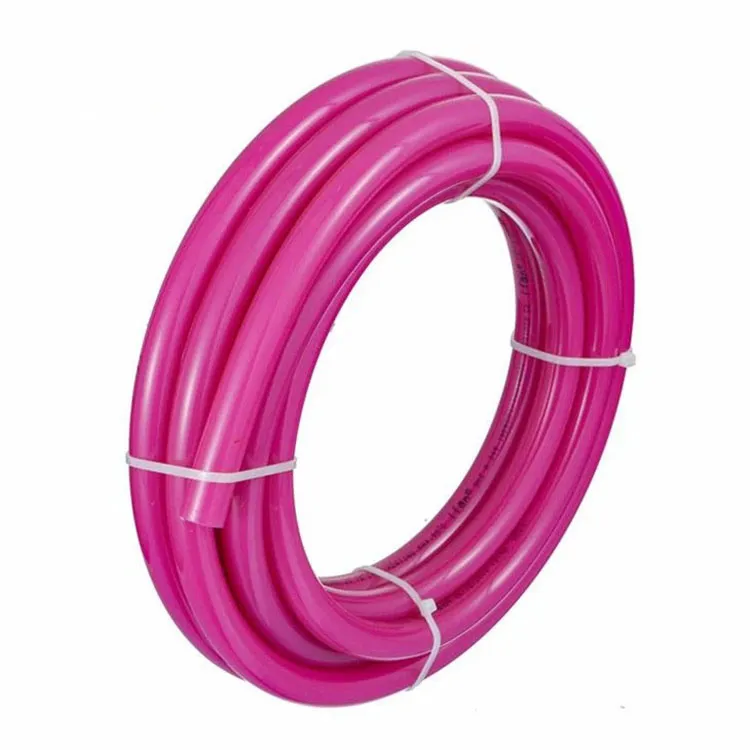When working on modern plumbing, drainage, or water supply systems, choosing the right type of piping is essential for long-term performance and compliance. Among the most widely used options are the 110mm black soil pipe, black MDPE pipe, and black HDPE pipe—each designed for specific purposes. In this article, we will explore the differences between these pipe types, their applications, installation tips, and what you should know before making a purchase.
What Is a 110mm Black Soil Pipe?
A 110mm black soil pipe is a type of rigid plastic pipe commonly used in above-ground and underground drainage systems to carry wastewater from toilets, sinks, showers, and other fixtures to the main sewer. In the UK and many other countries, 110mm is the standard size for soil stacks and external soil pipework.
Key features
Made of uPVC or ABS plastic
Available in black for external use (grey is more common indoors)
Usually connected with push-fit or solvent weld fittings
UV-resistant and weatherproof
Typical applications
External soil stacks
Wastewater discharge from buildings
Ground-level or underground sewer connections
What Is a Black MDPE Pipe?
Black MDPE (Medium Density Polyethylene) pipe is widely used for cold water supply, especially for underground installations. It is flexible, lightweight, and resistant to pressure and impact.
Key features
Suitable for drinking water (WRAS-approved grades)
Lower pressure rating than HDPE but excellent for domestic water service
Used with compression fittings or electrofusion couplers
Common uses
Mains water supply pipe (typically 20mm to 63mm, but black MDPE can also be found in larger diameters)
Garden irrigation systems
Temporary or low-pressure water delivery lines
What Is a Black HDPE Pipe?
Black HDPE (High Density Polyethylene) pipe is a robust and high-strength pipe used for pressurized systems, both in water and industrial piping. It offers superior durability and is a preferred choice for long-distance underground piping.
Key features
High pressure and temperature resistance
Suitable for potable water, gas, drainage, and sewage
Fusion-welded for leak-free joints
Flexible over long distances
Typical applications
Underground water distribution systems
Agricultural irrigation
Industrial chemical or gas pipelines
Landfill leachate collection
Comparing 110mm Soil Pipe, MDPE, and HDPE Pipes
When deciding between these pipe types, consider the following:
Material: Soil pipes are rigid and made from uPVC or ABS; MDPE and HDPE are polyethylene-based and more flexible.
Connection Method: Soil pipes use push-fit or solvent weld; MDPE uses compression fittings; HDPE is often welded.
Application: Soil pipes are for drainage and waste; MDPE for low-pressure cold water; HDPE for high-pressure water or gas.
Color Usage: All three are available in black, but for different functional and visual purposes—black color also helps with UV resistance.
Installation Tips
Ensure proper slope for gravity flow.
Use rubber-seal push-fit or solvent weld joints.
Anchor securely on walls or underground trenches.
For Black MDPE Pipes
Use compression fittings for fast and leak-proof connections.
Avoid sharp bends to prevent kinking.
Suitable for shallow trenches with proper bedding.
For Black HDPE Pipes
Use butt fusion or electrofusion welding for permanent joints.
Allow for thermal expansion and contraction.
Ideal for long runs with fewer joints needed.
Buying and Specification Tips
110mm soil pipes should comply with EN 1329 or BS 4514 standards (for the UK).
MDPE and HDPE pipes should meet standards such as ISO 4427 or BS EN 12201.
Always choose pipes with certification if they are used for potable water supply.
For large or underground installations, consider HDPE for its long-term strength.
For domestic cold water connections, black MDPE is usually the most cost-effective.
Each of the pipes—110mm black soil pipe, black MDPE pipe, and black HDPE pipe—has unique strengths tailored to specific systems. Understanding their differences will help ensure that your drainage or water supply project is durable, compliant, and efficient. Whether you're working on a new build, a renovation, or a utility upgrade, choosing the right pipe type is key to long-term success.
FAQ
Q1: What is the standard size of a black soil pipe for drainage systems?
A1: The standard size for black soil pipes used in residential and commercial drainage systems is 110mm. This size is widely accepted for soil stacks, external waste drainage, and underground sewer connections in many countries, especially the UK.
Q2: Can I use a 110mm black soil pipe underground?
A2: Yes, 110mm black soil pipes are suitable for underground installation if they are designed for external use. Ensure proper bedding, joint sealing, and compliance with building regulations for buried waste systems.
Q3: What is the main difference between black MDPE pipe and black HDPE pipe?
A3: The main difference lies in density and pressure tolerance. MDPE (Medium-Density Polyethylene) is generally used for low-pressure cold water supply, while HDPE (High-Density Polyethylene) is stronger and ideal for high-pressure water, gas, or chemical transport.
Q4: Is black MDPE pipe safe for drinking water?
A4: Yes, if it is WRAS or NSF certified, black MDPE pipe is suitable for potable water supply. It is commonly used in mains water connections for homes and rural buildings.
Q5: Can black HDPE pipes be used for drainage?
A5: Absolutely. Black HDPE pipes are commonly used in subsurface drainage, stormwater systems, and industrial wastewater handling due to their flexibility, durability, and chemical resistance.
Q6: How are black MDPE and HDPE pipes connected?
A6:Black MDPE pipes are usually connected using compression fittings.
Black HDPE pipes are typically joined by butt fusion or electrofusion welding, creating leak-proof, long-lasting joints ideal for underground use.
Q7: Where can I buy 110mm black soil pipes or black polyethylene pipes?
A7: These pipes are available through plumbing supply stores, building material suppliers, or online platforms such as Amazon, Screwfix, Alibaba, or direct from manufacturers. Always confirm the specifications and compliance before purchasing.







328.webp)

294.webp)
476.webp)
420.webp)
146.webp)
460.webp)
287.webp)


